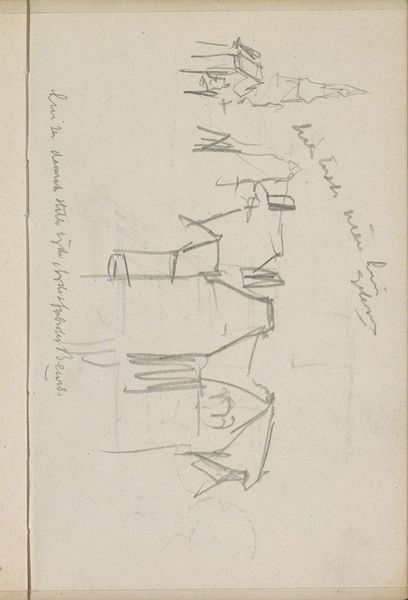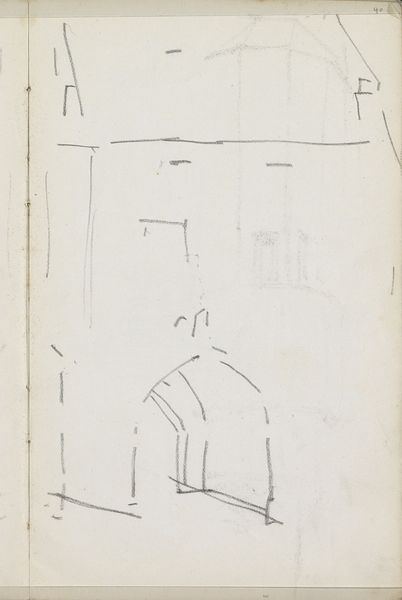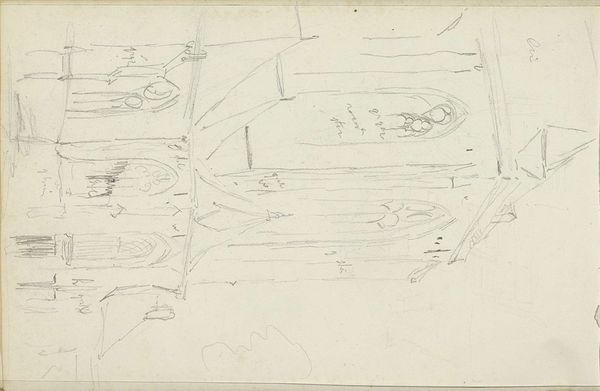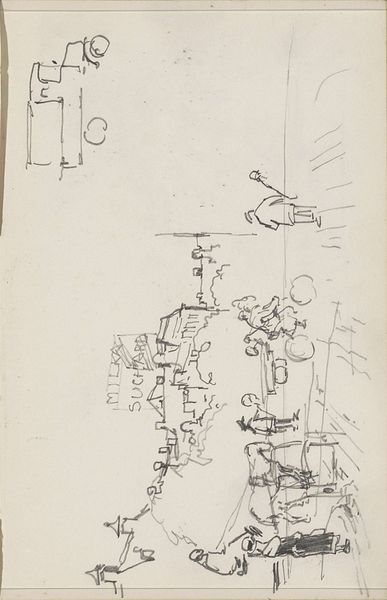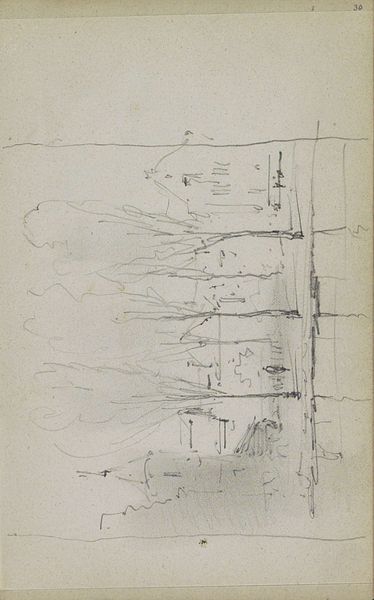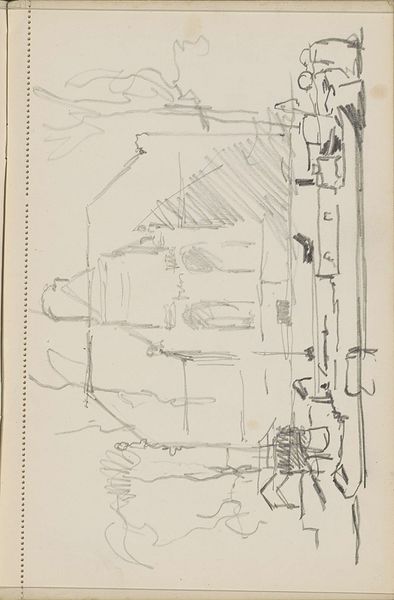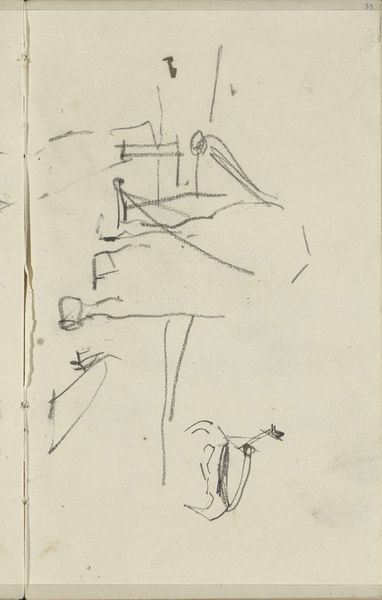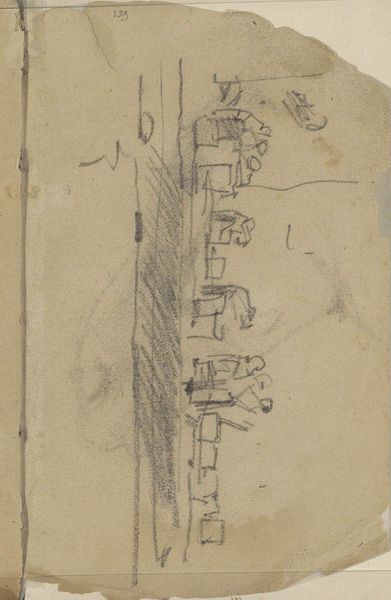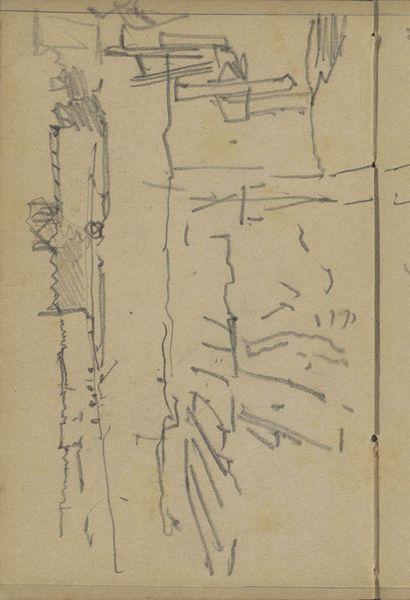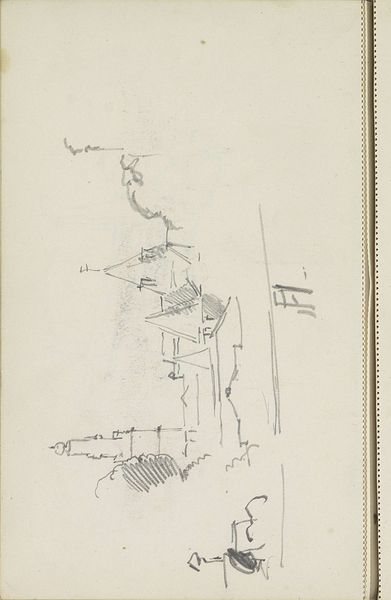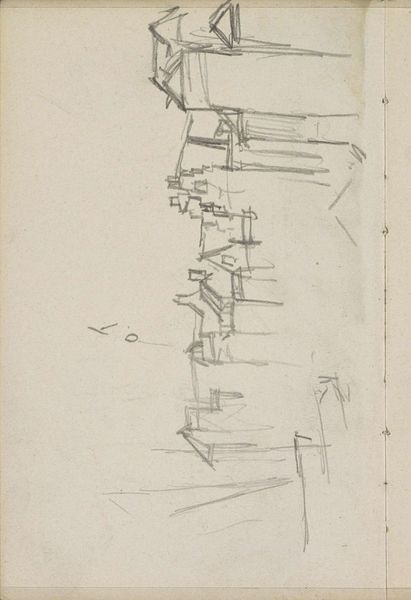
Copyright: Rijks Museum: Open Domain
Curator: Kerk aan een laan met bomen, translated as "Church on a lane with trees," is a graphite drawing from the collection of the Rijksmuseum attributed to Cornelis Vreedenburgh. The piece is thought to originate sometime between 1890 and 1946. Editor: My first impression is the raw simplicity. It's skeletal, almost unfinished, but there’s a haunting beauty in its austerity. You get a sense of melancholy from it, or maybe just the quietness of observation. Curator: It's crucial to remember that the late 19th and early 20th centuries witnessed the rise of urbanization but also the conservationist movement. How might Vreedenburgh's choice of subject, a church nestled within a lane of trees, comment on these changing socio-political values, maybe acting as a spiritual or emotional anchor? Editor: I read the landscape here through the lens of gender. The church and the road have been traditionally associated with masculine ideals of power and progression, but this space seems enclosed by, even yielding to, the softer organic shapes of nature, offering a feminized view of the cityscape that defies convention. Curator: It's a delicate dance. I think Vreedenburgh seems less intent on resisting convention and more invested in capturing a particular mood, a fleeting impression. The starkness of the graphite medium reinforces that, emphasizing process and immediacy, very much in line with plein-air sensibilities. How do you perceive the technique contributing to a message of accessibility and art democratisation? Editor: Technique isn’t just about style; it’s about what is omitted. The absence of detail creates a blank space in which viewers are invited to confront their biases concerning rural, urban, religious and secular representations. Is there a dialogue happening that might subtly interrogate patriarchal norms prevalent in both the church and the developing modern metropolis? Curator: Maybe so. Perhaps it’s about prompting more questions than easy answers regarding the intersection of tradition, faith, and modernity within society. It’s certainly successful at conveying a nuanced perspective of its historical moment. Editor: Exactly. It urges us to view both architectural landmarks and organic environments through a lens of intersectional analysis.
Comments
No comments
Be the first to comment and join the conversation on the ultimate creative platform.
